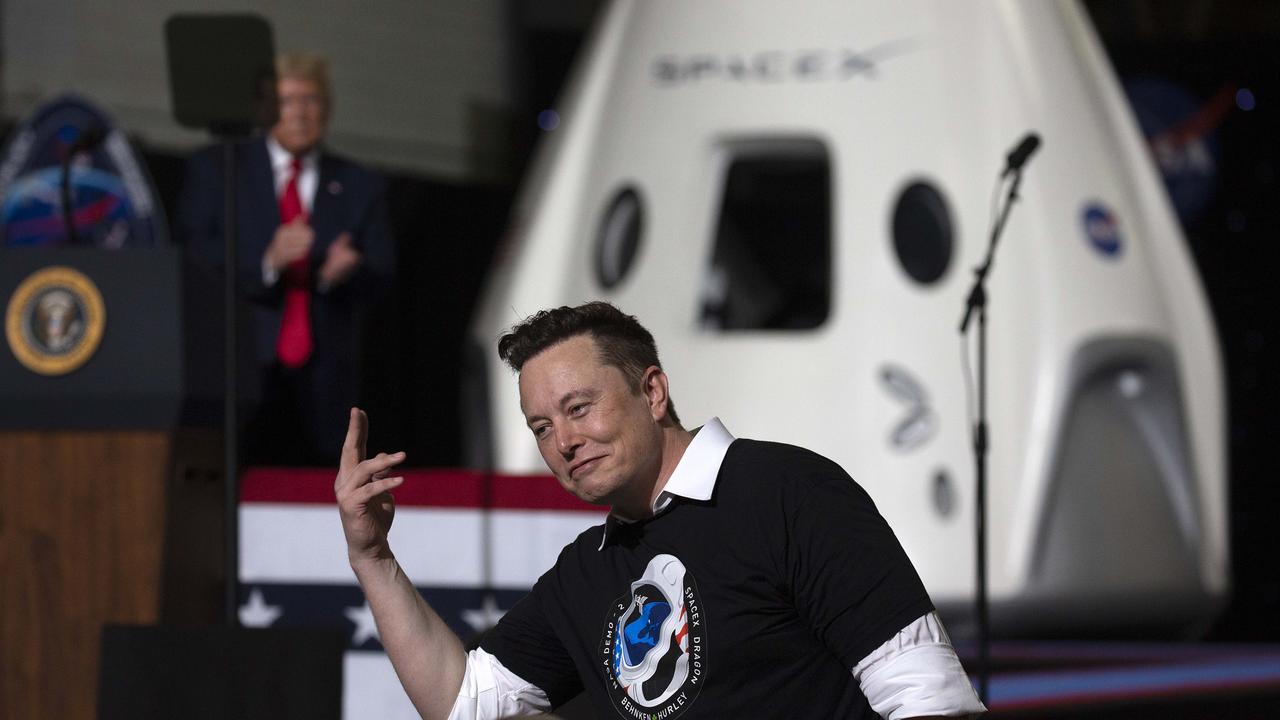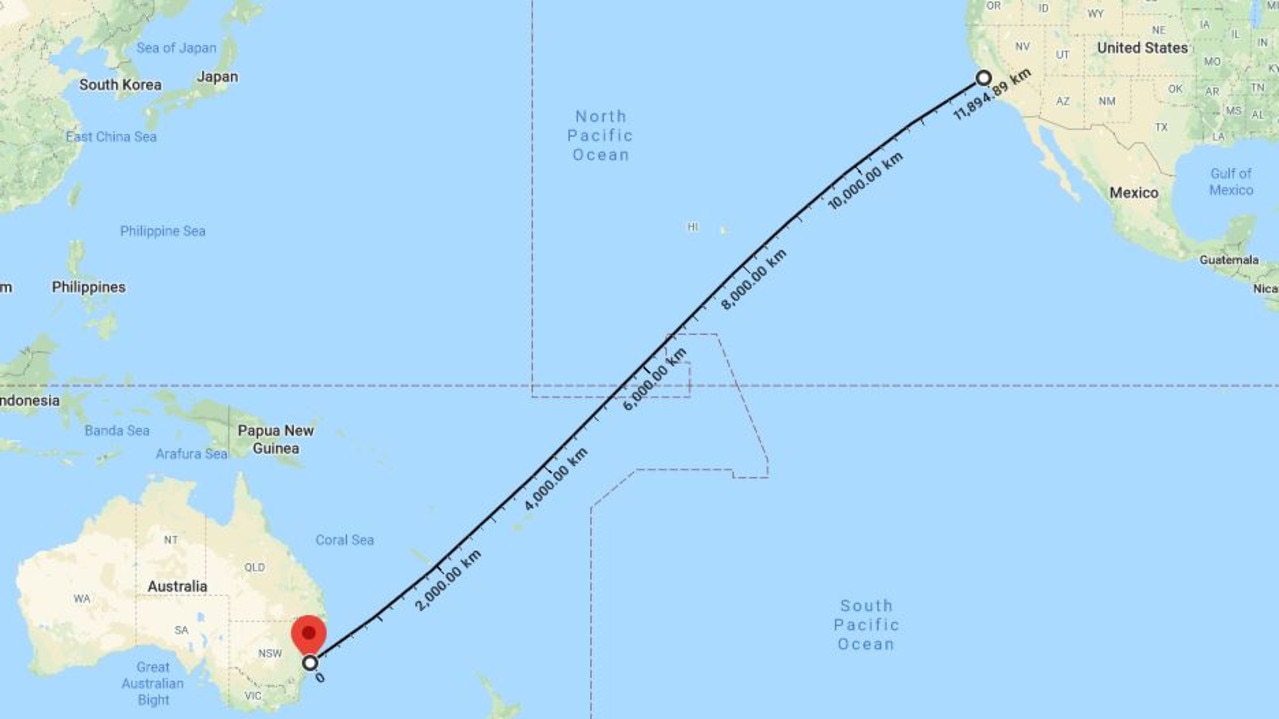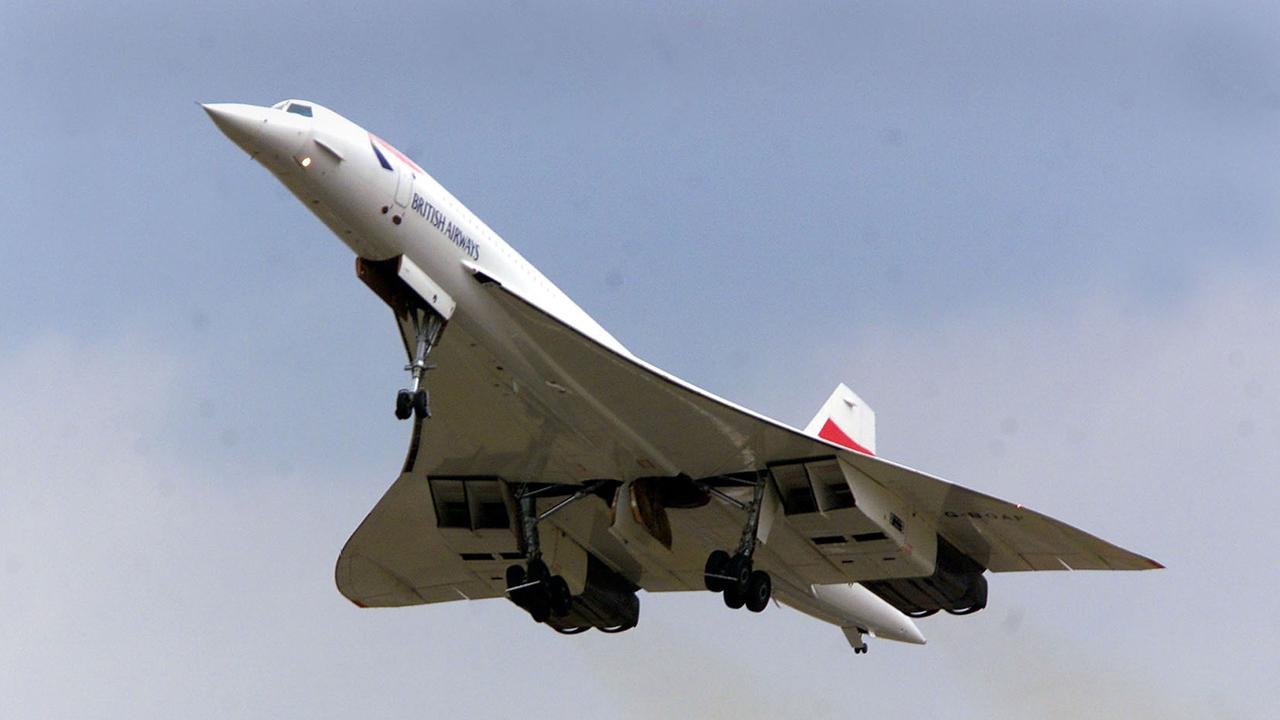Elon Musk confirms SpaceX spaceports for hypersonic travel
Just weeks after successfully sending a rocket into space, Elon Musk has confirmed his next move will be hypersonic travel on Earth.
Elon Musk has announced futuristic “space ports” as part of his mission to colonise Mars, claiming they could also offer “hypersonic” travel around Earth.
The SpaceX founder took to Twitter to confirm the news, retweeting another user quoting a job listing that the company was looking for people to “work as part of a team of engineers and technicians to design and build an operational offshore rocket launch facility” in Brownsville, Texas on the US-Mexico border.
“SpaceX is building floating, superheavy-class space ports for Mars, moon, and hypersonic travel around Earth,” Elon Musk explained in the tweet.
SpaceX is building floating, superheavy-class spaceports for Mars, moon & hypersonic travel around Earth https://t.co/zLJjz43hKw
— Elon Musk (@elonmusk) June 16, 2020
In response to a question in his mentions, Musk said the spaceports would “pretty much” be refurbished oil platforms in the Gulf of Mexico.
He added the platforms “need to be far enough away so as not to bother heavily populated areas”.
“The launch and landing are not subtle, but you could get within a few miles of the spaceport in a boat,” Musk responded to another user.

Asked about the “hypersonic” Earth-to-Earth flights, he said “there will be many test flights before commercial passengers are carried”, and the test flights probably won’t begin for another two or three years.
“Hypersonic” speeds begin at around 6,174 km/h, fast enough to cover the almost 12,000 kilometres between Sydney and Los Angeles in just two hours.
RELATED: Homegrown rockets bound for space

RELATED: NASA’s brutal selection process
It would be the fastest commercial travel option if Musk can pull it off.
British and French airlines collaborated for a few decades on the supersonic Concorde, capable of flying between New York and London in a little more than three hours.
Flying on the Concorde was not cheap, but neither was the program that birthed it, and high ticket prices and sustainable demand meant it was still profitable.
Following a 2000 crash that killed everyone on board (the only fatal Concorde incident) and impact of the September 11 attacks on commercial air travel, and the end of maintenance support, the last Concorde flew in October 2003.

RELATED: SpaceX makes history with first crewed launch
If you had big dreams of working on the space port project there’s a few hurdles you’ll have to overcome.
In addition to the required qualifications and experience (themselves no easy feat to achieve), to comply with United States laws about space and military technology, you’ll need to be a citizen of the US, a lawful permanent resident, or a temporary resident or refugee who applies for “naturalisation” within the first six months of becoming eligible.
You’ll also need to be willing to travel and work “significant overtime”.
Passing a background check for the Cape Canaveral Air Force Station in Florida is another must (that’s where SpaceX leases a complex), and obviously, being able to work on an offshore platform is another requirement.



